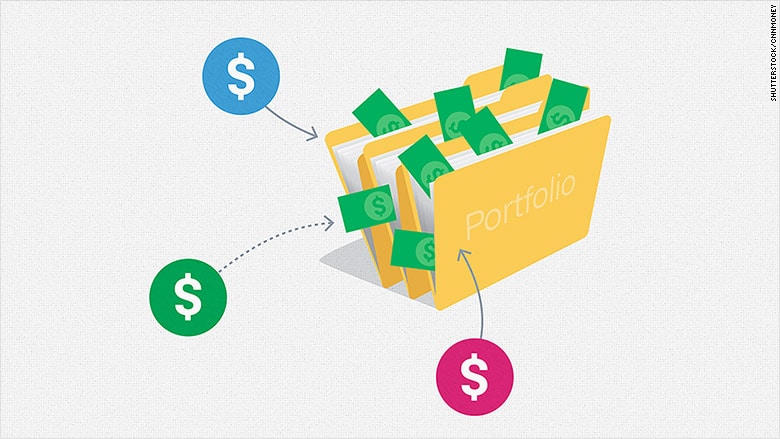Many organizations struggle with project portfolio management (PPM). On the face of it, portfolio management should be easy. We want to align our fiunding decisions to the organization’s strategic objectives. Since budgets are limited, this becomes a constrained optimization problem, which most easily performed in the classroom.
Investment portfolio management is often used as an analogy for PPM. We are familiar with the concept of balancing risk and return. In our retirement portfolios, we hold a mix of stocks for growth and bonds for stability. Conceptually, investment management is easy. In reality, it is hard.
Traditionally, PPM leverages similar financial measures to identify projects with the greatest potential return. Unfortunately, the analogy becomes complicated quickly. We don’t always have consistent measures to compare expected performance—how do you value the benefit of a regulatory requirement? Instead of dedicated teams of investment managers, we are lucky to have a few people managing the portfolios in addition to their other responsibilities.
Many organizations try to manage their project portfolios using complex processes and financial measures. In my experience simplicity and flexibility are the keys to building an effective portfolio management process. In this article I present some practices to simplify the project selection process.
A Two-Stage Selection Process
Selecting which projects to pursue is hard. It is a well-known phenomenon that people struggle with making decisions that involve multiple options. Consider how much harder it is to select an entrée at a restaurant with pages of options versus a one-page menu.
The menu analogy holds true when selecting projects. When there are hundreds of projects to evaluate, selecting the “right” ones can be difficult.
A two-stage process is an effective way to simplify this decision-making process. It allows us to rapidly eliminate a large number of options and focus our attention on the most viable candidates. Studies show that by eliminating choices we increase our brain’s cognitive capacity to evaluate the other options.
One company started its annual project funding cycle in early August and did not finish it until Thanksgiving. Submitted project requests were at least 3-times larger than the available budget. Countless hours were expended analyzing, justifying, reviewing, and discussing projects that had no chance of ever being funded. It was a terrible waste of effort and sapped management focus.
The first step in the process is a quick, scoring of the projects. The scoring sheets can be easily distributed and managed across a large number of stakeholders. The stakeholders rate the projects independently. Then, the portfolio manager consolidates and aggregates the results.
The second step is building a prioritized portfolio backlog of projects from those projects with the highest scores. After the projects have been scored, the portfolio manager works with the stakeholders to build the prioritized backlog of candidate projects. It is an ordinal ranking of upcoming projects.
Step 1: Scoring the Projects
Many organizations try to leverage the investment planning metaphor and evaluate projects based on a rate of return/investment metric. These metrics can work when evaluating a revenue generating portfolio.
Many projects do not generate revenue making it nearly impossible to calculate a rate of return. Infrastructure, regulatory and compliance changes are examples of projects where it is very difficult to estimate the benefit.
Portfolios containing is a mix of revenue and non-revenue generating projects are particularly challenged. It is like comparing apples and bananas; not even the shape is similar.
A project scoring model provides an effective way to quickly assess the relative value of many, heterogenous projects. The parameters used to score the projects will differ across organization and portfolios. For example, Finance may value compliance over revenue generation, while Marketing may have opposite priorities.
The scoring model includes parameters that are meaningful to that portfolio. They may be weighted to reflect the importance of one factor over another. Parameters might include:
- Revenue generation potential;
- Cost avoidance or cost savings opportunities;
- Regulatory or compliance requirements;
- Mandated projects from the organization’s senior management;
- Alignment with the organization’s strategic plans, and
- Necessary maintenance and enhancement requests.
Cost avoidance, compliance, mandates and maintenance items are important but hard to measure using financial terms. Weighting gives these often-unglamorous efforts extra visibility. To implement a weighting, allocate 100 points across the parameters. Use the weights to convey organizational priorities and objectives. For example: compliance may be 2X more important than cost avoidance.
When it comes to scoring use a 3- or 5-level scale such as: High, Medium, or Low; or Extra-Small, Small, Medium, Large, or Extra-Large. People can easily differentiate and sort items into these categories.
Assign disproportionately weighted values to the categories. Disproportionate values accentuate difference and ensure the most valuable items float to the top. For example: High = 9, Medium = 3, and Low = 1.
Step 2: Building the Backlog
The portfolio backlog is analogous to the Agile product backlog. The portfolio backlog is owned and maintained by the portfolio manager who is responsible for working with the stakeholders to develop and maintain the backlog.
The portfolio backlog is an ordinally ranked list of all of the highest-ranked project candidates. Projects at the top list should be “shovel ready” and can begin as soon as capacity is available to execute them. These projects should:
- Be aligned to the organizations strategic objectives;
- Have clear, well-understood requirements; and
- Have completed preliminary analysis and assessment work.
Projects in the medium and low priority categories do not need to be rank ordered. They should be periodically reviewed to see if conditions have changed and the project needs to be moved up, down, or cancelled. Only a minimally sufficient level of effort should be expended to groom this section of the list.
For the projects at the top of the list, regularly maintain the stack ranking. Periodically, the portfolio manager and key stakeholders should review these projects. The frequency depends on the size of the projects, the rate of change, etc. The review can occur monthly or quarterly.
When reviewing and ranking the high priority projects, it is helpful to use facilitation techniques that keep the process focused and moving. A poorly facilitated meeting can quickly break down.
Use facilitation techniques that minimize groupthink and conflict. One technique I recommend is to write the projects on Post It Notes® and array them in a wall based on their current ordering. On each card, write the name and the current ranking.
Invite the stakeholders to come up and rearrange the order. This should be done as a time-boxed and silent process. No discussion. Give stakeholders about 10-15 minutes to reorder the list. Stakeholders can simply rearrange order of the cards. If two projects are seen to have the same ranking, put them beside each other.
If there seems to be a lot of movement or disagreement regarding the placement of certain project cards, put a red dot or star on them indicating that we will need to have a discussion.
When the activity has settled, the portfolio manager should review the new ranking. She should start at the beginning and read through all of the items. As she reviews each card, she should pause and check for agreement. Sometimes it is easier to ask for agreement in the negative case, by asking, “Does anyone have a major disagreement with this decision?”
If discussion is needed, create a safe environment where people can openly share their perspectives. One way of facilitating this process is to time-box discussion. Similar to Congress, each participant has a set amount of time to make their point without interruption.
At the end of the portfolio prioritization session, review the final rankings and thank the stakeholders for their participation. When well facilitated, this process can effectively be used to evaluate a large portfolio in just a few hours.
© 2018, Alan Zucker; Project Management Essentials, LLC
To subscribe to Alan Zucker’s blog and see the sources of this content follow this link: http://pmessentials.us/blog/


